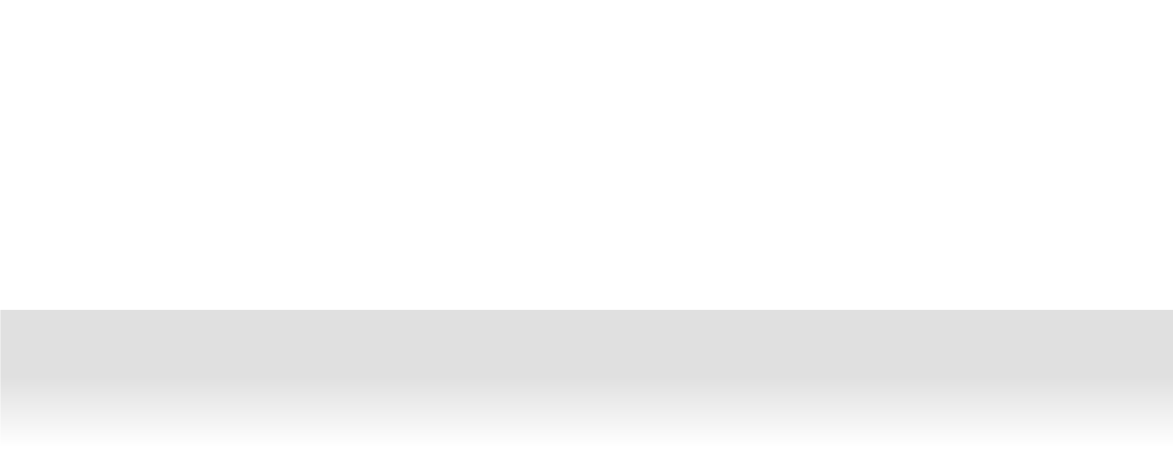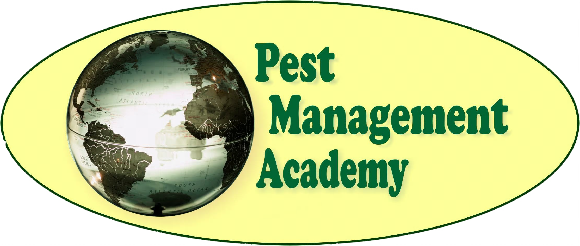


NETHERLANDS 0031 20 369 0282 | EUROPE 0037 28 154 8353 info@pestmanagementacademy.eu


NETHERLANDS +31(0)611143443

SECTION 1: LEARNER NOTES
1.1 General information
1.2 Definition and classification of pesticides in terms of type and grouping
1.3 Health and nuisance pests - general
1.4 The identification of health and nuisance pests
1.5 Sensitive or special accounts
1.6 Food handling establishments
1.7 Control methods for non-food establishments
1.8 Introduction to the Occupational Health and Safety
SECTION 2: Learning Map
SECTION 3: LEARNING DESCRIPTION AND OUTCOMES
3.1 What the Learning is all about
SECTION 4: Definition and classification of pesticides in terms of type and grouping
4.1 Introduction
4.2 The classification code
4.2.1 Pesticide labels
4.3 Pesticide Classification, Properties and Products
4.3.1 Classification according to Target Pest
4.3.2 Classification, Properties and Products
SECTION 5: health and nuisance pests - general
5.1 Introduction
5.1.1 Communication
5.2 Principles of Pest Control
5.2.1 Health & Nuisance Pests
5.2.2 Pest Identification
5.2.3 Pest Control
5.2.4 Pest Control Goals
5.2.5 Threshold Levels
5.2.6 Pest Monitoring
5.2.7 Avoiding Harmful Effects
5.3 Diseases Caused by Pest-borne Pathogens
5.3.1 Pests and Public Health
5.3.2 Carriers and Vectors
5.3.3 Poison Irritation and Allergy
5.3.4 Pests and Diseases
5.3.5 Diseases Encountered on the Job
5.3.6 Recommended PPE
5.3.7 Integrated Pest Management
5.3.8 Pest Control Failures
5.4 The IPM Concept
5.4.1 Definition of Integrated Pest Management (IPM)
5.4.2 Origin of the term IPM
5.4.3 Developement of the IPM concept
5.4.4 Structural IPM in an Urban Environment
5.4.5 Moving away from pesticides
5.4.6 Attributes of IPM programme
5.5 Advantages of integrating a range of control methods
SECTION 6: Introductory concepts in the study of Integrated Pest Management (IPM)
6.1.1 Introduction
6.1.2 Definitions
6.1.3 Biological Growth Potential of Insects
6.1.4 Pest Control
6.1.5 Economic Injury Level
6.2 Industry Trends and Protocols that impact on IPM
6.2.1 Trends and debate
6.2.2 Using Pesticides
6.2.3 Barriers that could impact on IPM
SECTION 7: PUBLIC RELATIONS
7.1 General Guidance
7.2 Acceptance of Slow-Acting Controls
7.3 Structural Modifications
7.4 Surveillance
7.5 Tolerance of Occasional Low-Level Sightings
7.6 Sanitation
SECTION 8: general steps in IPM
8.1 The Six Steps of the IPM Process
8.1.1 Step 1: Understanding and Educating the Customer
8.1.2 Step 2: Analyzing the Pest Problem
8.1.3 Step 3: Taking Short-Term Corrective Action
8.1.4 Step 4: Implementing Long-Term Preventive Action
8.1.5 Step 5: Monitoring, Documenting and Evaluating Results
8.1.6 Step 6: Getting Back to the Customer
8.1.7 Summary
SECTION 9: treatment selection
9.1 IPM control principles
9.1.1 Cultural Control
9.1.2 Mechanical and Physical Control
9.1.3 Biological Control
9.1.4 Chemical Control
9.2 Selecting treatment strategies
9.2.1 Criteria for selecting treatment strategies
9.3 Timing treatments
9.3.1 Spot Treatments
9.3.2 Summary of available treatment options
9.3.3 How to Select a Pesticide for an IPM Programme
9.3.4 Pesticide Use Guidelines
9.4 Other miscellaneous IPM procedures
9.4.1 Solid Waste Management
9.4.2 Sealing and Exclusion
9.4.3 Lighting
SECTION 10: HACCP/FOOD SAFETY
10.1 What Is HACCP?
10.1.1 Quality Control
10.1.2 What is Meant by GMP
10.1.3 The Scope of GMP
10.1.4 Pest Controland HACCP
10.1.5 Pesticides and HACCP
10.1.6 GMP and its Link to HACCP
10.1.7 Area of Responsibility as a P.C.O.
10.2 Pest Management HACCP File
10.3 Medical Emergencies
10.4 International Pest Management Consultants
10.5 PRP / GMP and HACCP

The Field Pest Biologist culminates in a Master Pest Control Operator whose function it would be to set up a full pest control program for a facility. This would entail a full assessment of the site to identify infestation, areas of access and vulnerability where pests might enter and nest in the facility. The field pest biologist would then work out a treatment plan combining all elements of integrated pest management to firstly block entry into the facility, then removing food and water sources and only then implement a treatment program that will use the least amount of pesticides choosing the options that are least toxic with acceptable LD50 values. Monitoring the success of the pest control plan coupled with infestation flow charts will then be the priority to advise the customer on strategies to minimize ongoing infestation. This course will enable the student to perform third party audits for food safety / HACCP facilities.
FIELD PEST BIOLOGIST (EQF 5)
10.6 PRP Checklist
10.7 Service Record
10.8 Service Agreement
10.9 Specifications
10.10 Sighting Log
10.11 Client Action Log: Outstanding
10.12 Client Satisfaction Questionnaire
10.13 Sanitation and Pest Control Inspection Report
10.14 International Pest Management Consultants - Health and Safety Policy
10.15 Risk Assessment & Health & Safety Procedures
10.16 Request for Identification of Specimen:
10.17 Specimen Identification Form
10.18 Schedule of Pesticides
SECTION 11: The identification of Health & Nuisance Pests
11.1 Health Pests (Vectors & Parasites)
11.1.1 Cockroaches
11.1.2 Rodents
11.1.3 Mosquitoes
11.1.4 Flies
11.1.5 Fleas
11.2 Nuisance Pests
11.2.1 Ants
11.2.2 Birds
11.2.3 Snakes
11.2.4 Bats
SECTION 12: Stored product pests and their control
12.1 List of Pests on Stored Commodities
12.1.1 Angoimois Grain Moth
12.1.2 Indian Meal Moth
12.1.3 Tropical Warehouse Moth
12.1.4 Tobacco Moth
12.1.5 Grain Weevils
12.1.6 Bean and Pea Weevils
12.1.7 Lesser Grain Borer
12.1.8 Trogoderma Beetles
12.1.9 Saw-Toothed Beetles
12.1.10 Flour Beetles
12.1.11 Tobacco Beetle
12.1.12 Flat Grain Beetles
12.1.13 Cadelle Beetle
12.1.14 Larger grain borer
SECTION 13: Maintenance of the Spraying Apparatus
13.1 Determining the flow rate of the grain
13.1.1 Preventative measures for accurate application
13.2 Spraying of Bag Stacks
13.2.1 The Spraying Apparatus
13.2.2 Insecticides and their application
13.3 Organisation and Planning of Disinfestations Campaign at Bag Depots
13.3.1 General
SECTION 14: Commodity fumigation processes
14.1 Types of Commodity Fumigation
14.2 Fumigation of commodities under tarps
14.2.1 Step 1: Planning
14.2.2 Step 2: Inspection and measurement
14.2.3 Step 3: Sealing
14.2.4 Step 4: Shooting
14.2.5 Step 5: Monitoring
14.2.6 Step 6: Aeration
14.2.7 Step 7: Testing
14.2.8 Step 8: Cleanup
SECTION 15: Sensitive or Special Accounts
15.1 Introduction
15.1.1 Commercial Food Establishments
15.2 Electronic Equipment
15.3 Hospitals and Related Accounts
15.3.1 The Obvious Concerns
15.3.2 Responsible IPM in Hospitals
SECTION 16: Food Handling Establishments
16.1 General
16.1.1 PRP-GMP-HACCP
16.1.2 Summary
16.1.3 How does HACCP Affect Pest Control?
16.1.4 HACCP – Pest Control House Rules
16.1.5 Food Manufacturing Quality Control
16.1.6 The PCO's Role in Food Handling Establishments The PCO's Role in Food Handling Establishments
16.2 Control Methods – Industrial / Manufacturing / Warehousing
16.2.1 Stored Product Insect Control
16.2.2 Flying Insect Control
16.2.3 Cockroach Control
16.2.4 Bird Control
16.2.5 Rodent Control
16.3 Control Methods - Commercial Establishments
16.3.1 Introduction
16.3.2 Pest Management in Retail Food Stores
SECTION 17: Control Methods for Non-food Establishments
17.1 Introduction
17.2 Control of Health Pests (Vectors & Parasites)
17.2.1 Cockroach Control
17.2.2 Rodent Control
17.2.3 Fly Control
17.2.4 Flea Control
17.3 Control of Nuisance Pests
17.3.1 Control of Ants
17.3.2 Bird Control
17.3.3 Snake Control
17.3.4 Bat Control
SECTION 18: Examples of useful documents
18.1 Pest Activity Log Book
18.2 Pest Control Program (Example of entries)
18.3 Pest Control Program
18.4 Treatment Specification
18.5 PRP/GMP Checklist
SECTION 19: Safety on the Job
19.1 Safe Handling Procedures and Practices
19.2 Safety in Relation to Pest Control Activities
19.2.1 Safe Handling of Pesticides
19.2.2 Toxicity of Pesticides
19.3 Handling pesticides
19.3.1 Signals, warnings and safe handling directions
19.4 Dangers Involved in the Misuse of Pesticides
19.4.1 Routes of exposure to Pesticide Poisoning
19.4.2 Poisoning hazard
19.5 Personal protective equipment and clothing
19.5.1 Protective equipment
19.5.2 Personal protective clothing (SABS 072: 1993)
19.5.3 Keys and tips to safe handling
19.6 Handling of Spillages
19.6.1 What to do When a Spill Occurs?
19.6.2 Clean-up Procedures
19.6.3 Decontamination Procedure
19.6.4 Disposal
19.6.5 Personal Hygiene
19.7 Triple rinsing
19.7.1 Why Triple Rinse?
19.7.2 How to “triple rinse” empty containers:
19.8 Pesticide poisoning first-aid procedures
19.8.1 In the event of accidental poisoning
19.8.2 General principles of first aid
19.8.3 Step-by-step CPR instructions
19.8.4 Be prepared – take precautions
19.9 Pollution and the Environmental Impact
19.9.1 Pollution
19.9.2 The Environment
SECTION 20: Safe storage procedures and practices
20.1 Introduction to Pesticide Storage
20.1.1 Important Safety Factors
20.1.2 Household Items
20.1.3 Security Measures
20.1.4 The pesticide Storing facility
SECTION 21: Pest Management procedures for the safe production of food
21.1 Food Water Shelter
21.2 Food safety
21.2.1 Overview
21.2.2 Food Hygiene Regulations
21.2.3 HACCP – Hazard Analysis Critical Control Point
21.2.4 Pest Management Standards in the Food Industry
21.2.5 Risk-based standards
21.2.6 Application of standards
21.2.7 Environmental management and pesticide reduction
21.3 Pest Awareness and Staff Training
21.4 Reporting and Record Keeping
21.4.1 Pest sightings log
21.4.2 Pest control report
21.4.3 Other records
21.5 Rodents
21.5.1 Rats
21.5.2 Mice
21.5.3 General Biology and Behaviour
21.6 Cockroaches
21.7 Common Cockroach Species
21.7.2 Egg case (oothecae) development in cockroaches
21.7.3 General Biology and Behaviour
21.8 Flies
21.8.1 Common Fly Species
21.8.2 General Biology and Behaviour
21.9 Ants
21.9.1 Significant Species and Habits
21.9.2 Pest Status of Ants
21.10 Stored Product Insects
21.10.1 Categories and Common Types of Stored Product Pests
21.10.2 Identification
21.10.3 Life Cycles of Common Stored Product Insects in the Food Industry
21.10.4 Preventive measures
21.11 Birds and Other Vertebrates
21.11.1 Birds
21.11.2 Other Vertebrates
21.12 Inspection and Auditing of Food Premises
21.12.1 Integrated Pest Management
21.12.2 Inspection Techniques and Equipment
21.12.3 Inspecting for Rodents
21.12.4 Inspecting for Insects
21.12.5 Monitoring
21.13 Pest prevention
21.13.1 Overview – the Principle of E-R-D
21.13.2 Building Design and Pest Proofing
21.14 Hygiene
21.14.1 Attraction of Pests Due to Poor Hygiene
21.14.2 Identifying hygiene shortfalls
21.14.3 Minimising Pest Attraction
21.14.4 Storage Areas
21.14.5 De-commissioned Equipment
21.14.6 Drains and water
21.15 Waste Management
21.15.1 Location and Design of Waste Collection Areas
21.16 Environmental Management
21.16.1 Types of plants and design
21.16.2 Trees and shrubbery
21.16.3 Ground cover
21.16.4 Landscaping materials
21.16.5 Location adjacent to buildings
21.17 Non-Chemical Control Methods
21.17.1 Physical Control Overview
21.17.2 Rodent and Other Vertebrate Trapping
21.17.3 Insect Trapping
21.17.4 Other Physical Control Methods
21.18 Chemical Control Methods
21.18.1 Pesticides in Food Plants Overview
21.18.2 Insecticides
21.18.3 Rodenticides
21.19 Environmental Considerations
21.19.1 Environmental management
21.20 Pest Control Contracts
21.20.1 Requirements in Selecting a Contractor
21.20.2 Training and Qualifications
21.20.3 Service Level Agreement (SLA) - Objective
21.20.4 Quality Assurance
ANNEXURE 1 : References
Dates Venue Cost
Training Information
Course Content
Course Program
The program starts with a full day training program where the prospective field pest biologist will be given workbooks, assignments and an outline of the thesis requirements. The learner will then have three months to complete his/her thesis which must be based on real time active facilities where a full case study can be done. The program will then culminate in a final day where the workbooks, assignments and the completed thesis are assessed together with a full practical and problem solving assessment. The prospective field biologist will also be expected to identify a full range of health and nuisance insects during the final assessment.
On completion of this course, the learners will be able to:
- A learner achieving this qualification will understand the basic principles of an integrated pest management system with basic control measures as per pest control enterprise. Furthermore, the learner will be able to recognise and differentiate between economical damageable pests and diseases and make use and interpret sources for application or product management.
- Learners will gain an understanding of sustainable pest control practices as applied in the domestic, commercial and industrial sub fields. This qualification focuses on the application of pest identification and control measures.
- They will be able to participate in, undertake and plan pest control practices with knowledge of their environment. This qualification will instill a culture of maintenance and care for both the environment as well as towards customers infrastructure and operations.
Learners will specifically be able to:
- Demonstrate a basic understanding of the principles of integrated pest management.
- Identify and differentiate between economically damageable pests, sporadic pests, diseases and symptoms using guides or resource material.
- Understand the different types of control measures that can be applied in integrated pest management programme for pests, diseases and weeds.
- Assist in developing a plan to assist the decision making process on the type of control to apply.
- Execute post-application monitoring
- Apply environmental and community considerations.
- Oversee the management of an agrochemical storage facility effectively and responsibly.
- Understand the full HACCP/GMP flow in a facility
- Apply HACCP and Food Safety principles in a pest management program
Learners will also gain basic knowledge of:
- The fact that integrated pest management is the integration of a number of different methods of pest control.
- The importance of monitoring at regular intervals.
The following is explained:
- The influence of the ratios between pests and predators on the decision on which control method to use;
- The importance of replacing the pheromones, clearing the traps regularly and the collecting and assessing of information;
- The importance of recording the data correctly;
Data is recorded by applying the basic principles.
Pests and beneficial insects in specific environments are recognized, identified, counted and recorded and the impact or findings is assessed.
The damage and the cause of the damage are observed, categorically explained and prevention strategies are identified.
The following is included in the course:
- Full comprehensive manual.
- Practical assessment.
|
TBA |
Amsterdam 3 Days 09:00-16:00 |
TBA |